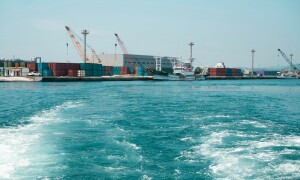Inflation continues to pose a high degree of risk to macro-stability in the country. According to the latest data released by the Federal Bureau of Statistics (FBS), the CPI, which is the most relevant tool of measuring inflation in Pakistan, rose by as much as 13.92 percent during 2010-11 (July-June, 2011) as compared to 11.73 percent in the previous year.
It needs to be highlighted that the rate of inflation, which mostly used to be in a single digit upto 2006-07 in the country, rose to 12.00 percent in 2007-08 and continues to be in double-digits, since then. There was some respite last year when the rate of increase in CPI had declined from 20.77 percent in FY09 to 11.73 percent in FY10 but the trend has worsened again during the outgoing year. The SPI and WPI, which had shown smaller increases during FY10 also went up sharply by 18.18 percent and 23.35 percent, respectively, during 2010-11.
Another worrying aspect was that inflationary pressures continue to mount as suggested by the rise of 0.55 percent, 1.16 percent and 0.56 percent in CPI, SPI and WPI, respectively, in June, 2011 over their levels in the previous month. The CPI, SPI and WPI were also higher by 13.13 percent, 16.91 percent and 24.37 percent, respectively, during June, 2011 as compared to the same month last year.
A substantially higher increase in WPI is a signal that inflationary pressures could accentuate in economy in the coming months. It was also disturbing that main contributor to inflation last year was the excessive increase in food prices and since a large part of income of ordinary households is spent on food items, rise in inflation during FY11 must have hit the poor and ordinary people of the country quite hard and depressed their standards of living further. It was also painful to see that inflationary pressures had accentuated at a time when employment opportunities were shrinking due to a very low growth rate of the economy.
A high rate of inflation during 2010-11 could be attributed to a number of factors. On the supply side, availabilities in the economy, as measured by the GDP growth, hardly showed any improvement. The pressure on prices of food items was particularly high due both to constrained domestic supplies and higher prices of food products abroad. Depreciation of the rupee also pushed up the rupee cost of all the imports. Other factors such as increase in domestic prices of POL products, adjustment in utility prices, loss in productivity due to power shortages and low level of investment also accentuated inflationary pressures in the economy.
On the demand side, money supply registered an increase of 14.24 percent during FY11 (as against a GDP growth rate of only 2.4 percent) and 90 percent of this expansion was due to government borrowings from the banking system. It is obvious that while monetary expansion through the increase in private sector credit could lead to a higher growth that usually suppresses inflation, massive government borrowings from the banking system, in general, accelerates the rate of inflation and often constrains the central bank to raise its policy rate. Clearly, both the supply and demand factors had combined in the previous year to push the rate of inflation higher than 9.5 percent projected in the beginning of the year.
Although it is too early to forecast the future trends in prices, yet concerted efforts on few fronts could help the government to achieve the inflation target of 12 percent fixed for FY12. Since the authorities in Pakistan cannot do much about the impact of exogenous factors, there was an urgent need to increase availabilities in the economy through a higher growth rate and contain domestic demand to a reasonable level by improving the fiscal position of the country.
A reduction in the budget deficit would also help in releasing a higher level of credit to the private sector and increasing its productivity. Besides, it was essential to control militancy, restore the writ of the state and improve energy supplies etc to normalise business environment in the country. We know that all of this is easier said than done but the objective of price stability is so important for the welfare of the people, that it cannot be ignored for long.
BR100
12,702
Increased By
113.8 (0.9%)
BR30
38,258
Increased By
378.2 (1%)
KSE100
118,383
Increased By
1067.8 (0.91%)
KSE30
36,395
Increased By
278.8 (0.77%)






















Comments
Comments are closed.